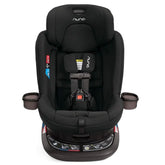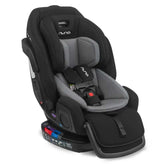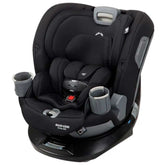The Guide to Baby Poop: Color, Texture, & What It Means

Different color poop in babies may provide surprisingly effective clues about their health. Children experience an assortment of poop colors, particularly during the first twelve months of life as their diet becomes more complex. It’s also worth noting that what’s considered normal for adult poop isn’t necessarily the same when it comes to texture or poop color in babies. Let’s take a closer look at the healthy, expected hues, the textures that may surprise you, and which changes in baby poop color merit a call to your child’s doctor.
Color of Poop Meaning in Babies
Changes in baby poop color are fairly normal, especially when they’re newborns. Various factors can cause these changes. Here are the most common colors and their causes.
Greenish-black, tar-like
Your infant’s first bowel movement, typically within the first few days after delivery, is a tar-like substance called meconium. This is their little body’s removal of all the stuff they swallowed during gestation, like amniotic fluid, intestinal epithelial cells, lanugo, mucus, bile, and water. It’s generally quite sticky and messy. After a day or two of this, you shouldn’t see black poop again. If you do, contact your pediatrician.
Mustard yellow, seedy, “sweet-smelling”
Breastfed infants produce about three to four loose stools each day. These poops are mustard yellow and look as though they have little seeds in them. Lots of breastfed infants poop after each nursing session – so there’s a good chance you’ll end up using all of those newborn-size diapers you bought.
Bright yellow
If your baby is having extremely runny bright yellow poops that are occurring more often than usual, they could be experiencing diarrhea. Diarrhea can raise the risk of dehydration. Consider calling your pediatrician.
Dark tan, “stronger-smelling” or greenish-brown
Formula-fed infants produce a firmer, darker poop that may occur only once per day (or more frequently). They’re typically brownish in color but may be a bit yellow or green, with a texture akin to hummus or peanut butter.
Orange
Baby’s poop can appear orange when it picks up pigments along their digestive tract. It’s normal for both breastfed and formula-fed babies to have orange poop.
Dark green
Dark green poop is typical in infants who are starting to eat green solid foods, like spinach and peas. Iron supplements or iron-fortified baby formula can also cause your baby’s poop to turn green.
Bright green, frothy
Bright green poop is sometimes observed in nursing infants who alternate between breasts too frequently. It may be an indication they are eating more of the lower-fat foremilk instead of the full-fat hindmilk. Be sure you are fully emptying each breast before switching your baby to the other side. Bright green poop may also be an indication of a viral infection, so check in with your pediatrician if your infant doesn’t seem to be acting right.
Brownish, solid
By the time your little one is a toddler, their poop will have slowly firmed up to a “Play-Doh-like” texture. The frequency of their poops is less important than the texture and consistency. Unfortunately, this is also the point at which their poops begin smelling a lot more similar to adult poops.
Red
Occasionally your infant’s poop can be red from dark red drinks or foods they’ve eaten, like beets. Red poop can also indicate the presence of blood in the stool due to an intestinal infection, milk allergies, or an anal fissure and requires treatment by a pediatrician. Sometimes red-tinted medication, like amoxicillin or cefdinir, may also cause red poop. Contact your child’s pediatrician for guidance if you notice your baby has red poop.
White or gray
White or gray stools can mean that your baby isn’t producing enough bile in their liver to help them digest food properly. If your baby has poop that is gray or white and has a chalky consistency, contact your pediatrician immediately.
Do ice-cold wipes trigger unhappy cries during diaper changes? The Munchkin Warm Glow Wipe Warmer will soothe the baby’s bottom and warm the mom’s heart. Help make diaper changing more enjoyable for your little one with the comfort of a warm wipe. This convenient wipe-warming system stores up to 100 standard baby wipes and dispenses them conveniently from a flip-top lid.

Munchkin Warm Glow Wipe Warmer
Texture and Consistency of Baby Poop
Besides changes in baby poop color, you should also observe the texture and consistency of your baby’s poop. Evaluating these characteristics together can help you decipher a lot about your little one’s health.
Newborn poops
Newborn poop (meconium) is sticky and thick. This is normal, and both the color and texture of a newborn’s poop will shift a day or two after delivery. Consult your pediatrician if it does not.
Breast milk poops
Nursing infants have looser stool that is quite runny or stringy. It may have small flecks in it that look like seeds or cottage cheese curds. They also tend to poop more often since breast milk is digested more quickly.
Formula poops
Infants who eat formula usually have firmer poops than those who eat breast milk.
Weaning phase poops
As you shift your little one from exclusively nursing to consuming other types of foods and fluids, you’ll notice many shifts in the color and texture of their poops. Stools will likely become firmer and stronger-smelling.
Constipation
If your baby seems to strain during a bowel movement, has very infrequent poops, or poops that seem quite hard, they may be constipated. It may be that their digestive tract is absorbing a lot of water, or it could indicate a food sensitivity. In extreme cases, it may be due to a more serious medical condition. Consult your pediatrician about possible solutions.
Diarrhea
Though baby poop isn’t as firm as grown-up poop, exceptionally loose or watery stool may indicate diarrhea. Keep a close eye on this as it may put your infant at an increased risk for dehydration. Diarrhea may be triggered by food sensitivities or allergies, too much juice (in toddlers), a side effect of antibiotics, or a symptom of inflammatory bowel or celiac diseases. Most instances of diarrhea typically last only two or three days but contact your doctor for guidance if it lasts for more than 24 hours.
Mucus or frothy stool
Mucus in a baby’s stool is fairly common and seldom an indication of any health issues. It may sometimes happen when teething babies swallow too much of their own drool. However, if your infant is not teething or shows signs of unusual behavior or illness, consult with your pediatrician. The mucus may be caused by an infection that requires treatment.
The Bottom Line
Chances are pretty good that over the next few years of changing diapers, you’ll run across a few poops that startle or confuse you. The texture and color of baby poop change for lots of reasons, including what they’re eating and how old they are. Sometimes it’s hard to tell what’s normal and what’s not, so check in with your pediatrician if you have any concerns.










